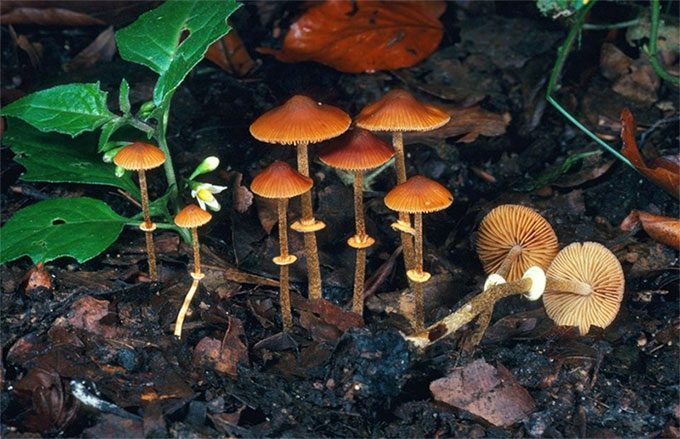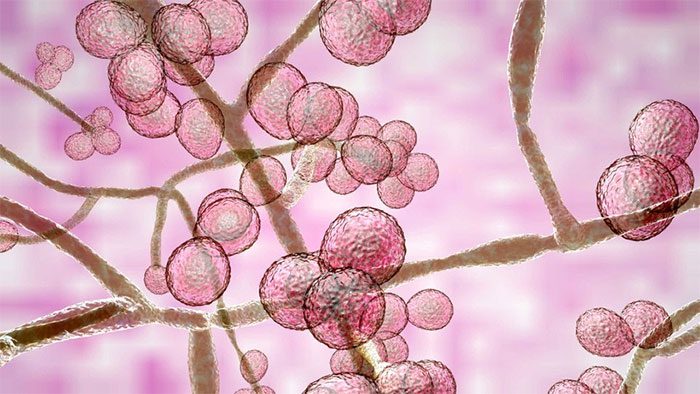The number of fungal infection-related diseases is on the rise.
Research by experts in Yunnan Province, China, indicates that climate change and human behavior have contributed to this situation.
Increased Warning of Fungal Infections
A decade ago, during the rainy season, many residents in Yunnan Province died suddenly from cardiac failure. After an extensive investigation, researchers from the Chinese Center for Disease Control and Prevention (CDC) discovered that the cause of death was a strange fungus known as Little White.

Fungal species in nature are changing and increasing their lethality.
This fungus belongs to the Trogia family and contains three types of toxic amino acids. In the wild, Little White fungus is small and has no commercial value, so local people in Yunnan consume it directly rather than sell it. It turns brown shortly after being harvested.
People who consume this type of fungus often exhibit symptoms such as rapid heartbeat, vomiting, dizziness, and most dangerously, strokes and sudden death.
Moreover, in recent years, the incidence of fungal infections has been rising. In October 2022, the World Health Organization (WHO) published for the first time a list of fungal pathogens threatening human health. This list includes 19 fungal species that not only cause infections or fatalities but may also resist current treatments.
“The incidence and geographical range of pathogenic fungi are expanding globally due to climate change and increased international travel and trade,” the WHO report stated.
A recent study estimated that in China alone, over 70 million people are infected with fungal diseases, ranging from harmless conditions like nail fungus and keratitis to particularly dangerous diseases such as cryptococcal meningitis, brain infections, and spinal infections.
Before the WHO issued its warning, experts in Yunnan highlighted the importance of studying the epidemiology of fungal infections. What concerns Chinese researchers is that they know very little about the origins of the fungi that cause disease in humans, even though Yunnan is one of the richest regions for diverse fungal species. However, scientists warn that climate change and human behavior are driving fungi to become more dangerous.
Professor Peter Mortimer, a mycologist at the Kunming Institute of Botany, part of the Chinese Academy of Sciences (CAS), warned: Human actions are disrupting ecosystems and breaking natural processes. For instance, in some areas of Yunnan, the natural environment of fungal species is under threat.
As the Earth becomes hotter and drier due to climate change, many plant and animal species are either going extinct or migrating elsewhere. Fungi cannot leave their habitat, so instead, they adapt by changing and becoming different organisms.
“Fungal species can completely change in their metabolism, physiology, and even their external appearance and structure. They can transform into a different species, but the scientific community has yet to fully understand this transformation process,” Mr. Mortimer commented.
Fungi Are Becoming Dangerous

Due to climate change and the impact of human behavior, fungi are becoming dangerous.
In reality, not all fungi can affect humans. Fungi thrive in environmental conditions of 25 – 28 degrees Celsius, while the human body temperature is 36 degrees Celsius, which is too hot for fungi to thrive. Therefore, historically, fungal diseases primarily caused skin or nail infections.
However, now, with global warming, fungi are adapting to higher temperatures. This allows fungal pathogens to thrive in the human body, where they previously could not exist.
After transforming from harmless characteristics that only extract nutrients from decaying wood, fungi can switch to extracting nutrients from living organisms, such as humans. Additionally, to adapt to human impacts, fungi have evolved to consume plastics and rubber, making them dangerous if they enter the human body.
At the same time, human activities, such as converting natural forests into rubber plantations, are uprooting the soil in Yunnan, where spores of thousands of fungal species reside. Fungi will release tiny spores into the air.
When humans inhale these spores or allow them to settle on their skin, these fungi can invade the lungs, bloodstream, and even the human brain. The fungal filaments will digest and absorb nutrients from living organisms.
Particularly, fungal diseases are extremely difficult to treat. According to Mr. Mortimer, fungal cells, which have structures similar to animal cells, are very hard to kill with medication. Consequently, many antifungal drugs may not be effective and could even harm human cells.
Mr. Mortimer stated: “When we deforest tropical regions and establish rubber plantations, we encroach upon natural sources of pathogenic fungi in the soil, increasing our exposure to them.”
In this context, Mr. Mortimer emphasizes the importance of establishing a monitoring system for potential fungal pathogens before land is converted for agricultural, building, or transportation purposes.
“When land use conversion is unavoidable, we can conduct a biodiversity assessment of fungi in the affected landscape to see which fungi are present, and then make management decisions on whether or not to proceed with land use conversion,” Mr. Mortimer shared.




















































